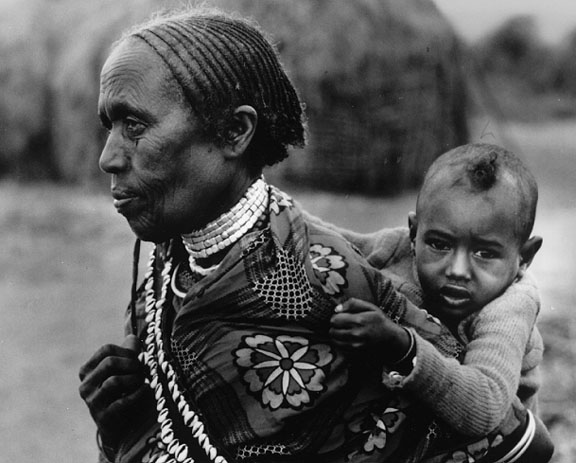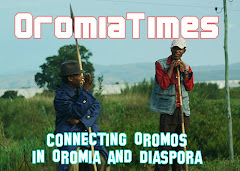As you may recall from the summary of the trip that I outlined a while back [here], I was able to carve out some time from the official itinerary — so rigorously planned by one of my colleagues — to visit with some representatives of the Oromo community in Kenya. If you’ve been reading my blog much at all, you know from my previous posts [here], [here], and [here] that I’ve been working with the Oromo community in the United States and Canada for about two years. What you may NOT know is that there is a large Oromo population in Kenya. So, there are two questions that I want to raise for this blog. The first question is one that any Oromo reader would know the answer to already: why are there so many Oromo in Kenya? And the second is more theoretical: why would I be so brazen as to think I could promote Oromo arts in Kenya, and what’s the use of doing so? (The answer to my brazenality question, as well as to the use-value question, may be already obvious to anyone who read my earlier Nairobi Diary post on how to write about ethnic violence in Africa.)
So, to answer the first question, there are basically three categories of Oromo living in Kenya: indigenous, refugee, and immigrant. It may surprise you to learn that there is a large indigenous population of Oromo living in Kenya, but in fact there are many ethnic groups living there, and as we all know, the British Empire drew its colonial boundaries to suit its interests without the least bit of deference to the people already living there. The indigenous Oromo in Kenya are called the Borana, and they moved to the rather arid regions of north and northeast Kenya about two hundred years ago as the European powers began colonizing the neighboring areas and as the Abyssinian kings began conquering the rest of Ethiopia. I started reading this book about them a few days before I left for Kenya but haven’t finished it yet. Through the global Oromo network on FaceBook, I got the opportunity to meet with a young man who is a Muslim Borana trying to create an NGO to help develop the communities where he grew up.
Here is some of the backstory. The Kenyan government discriminates against the Borana because it sees them as outsiders and also because it confuses them with the Somali. This confusion is not surprising since the Oromo and Somali languages are both Cushitic and since many of the Borana have mixed with the Somali there for the past century. (And of course, there is a large Somali population indigenous to northern Kenya as well, so it’s not surprising that when Kenya gained independence in 1963, the majority of people living in the northeast area voted to join with Somalia which had already gained its independence a few years earlier. And of course the British — being British — ignored that vote.) Although more than half the Borana are Muslim, a large percentage are Christian, and a few practice the more ancient Waaqeffannaa. The Kenyan government also believes that the Borana towns provide support and refuge for the Oromo Liberation Front who cross the border to escape the Ethiopian military. So, today the Kenyan government makes little effort to develop that region and inside Nairobi the police sometimes harrass the Borana and Somali. So, the work of this young man whom I met is quite important from a humanitarian perspective because his goal is to promote development by encouraging grassroots civil society in the region.
The refugee population is a bit diferent. They tend to come from other areas inside of Ethiopia. All of the refugees whom I met came in 2002. In 2001, the Ethiopian government brutally suppressed student groups who protested a corrupt election process. Then in January of 2002 the government tried to exterminate all dissent along with the remaining Oromo Liberation Front (OLF). In its attempt to chase down not just the OLF but all forms of it dissent, the government burned down some of the Bale forest where they OLF was supposedly hiding – an environmental tragedy whose real cause was not reported in the Western media as you can see from this BBC report. These refugees fled to neighboring Sudan, Somalia, Uganda, and Kenya, and when the U.S. president George W. Bush asked the Ethiopian government to invade Somalia in December of 2006, presumably to go after al Qaeda terrorists, the Ethiopian government used that opportunity to kill Oromo refugees there. In Kenya, many of the refugees have lived in limbo for the past eight years. Or rather, they have lived in something like a purgatory. It is illegal for them to work in Kenya, but they can’t leave either, so they can do nothing. Many live in refugee camps on the border, but some live in Nairobi, where they wait year after year for something to change.
Through the Oromo Lutheran church network in the United States, I was able to meet with a woman who works with refugees (not just the Oromo, but all refugees) and tries to help them with their legal problems and find them asylum in the U.S., Canada, etc. Her job is difficult because of course the United Nations refuses to recognize that the Oromo are political refugees and the United States considers the OLF to be a terrorist organization. (This is a curious contradiction — at the same time that the UN understates the political reality, the US overstates it. A whole essay could be written about that contradiction, I think.)
After talking with her, she arranged for me to go to one of training sessions for the refugees organized through the church in one of the slums of Nairobi. One of the members of the church picked me and two of my colleagues up in his taxi and took us there, where we talked with about four of the refugees, and then I gave a short presentation to the group of about 100 people about my work encouraging ”Oromo arts in diaspora.”
The third group is a relatively small group — the legal immigrants living and working in Kenya, such as the person I met who works on behalf of the refugees. Many of them actually came to Kenya not directly from Ethiopia but through other countries like the United States or Germany. They are often middle class, doing business or working for international organizations.
So, the question is, why arts? Most of the Oromo I meet give me a quizical, confused look when I start talking about art and literature. I get the distinct impression that in their minds such artistic endeavors are not so important compared to direct political action, the work of religious institutions, or scholarly efforts to correct the historical record. In fact, when I say I work with literature, almost everyone seems to assume I mean history — something I noticed before in the United States [see here], and noticed again in Kenya.
I think this question can be answered easily. Immediately after I gave my presentation, a young man in the audience came forward and showed me a painting he made shortly after the student uprising and subsequent repression in 2001. As I suggested to my audience that day, art has the ability to help people work through the trauma of history and to develop their cultural identity in response to a changing world. Art also has the ability to communicate across ethnic and political divisions, and therefore it has the ability to tell the human side of Oromo experience to a global audience, to gain recognition for their political struggle.
There is a lot of work to be done. Oromo culture has been largely an oral one, not a written one, and it has been this way not because of some essential Oromo-ness that privileges oral culture, but because publishing in their own language was outlawed by the Ethiopian government for most of the twentieth century. In actuality, one of the Oromo heroes is Onesimus Nesib who first translated the Bible into Oromo and thus not only created an Oromo written language but also gave the Oromo a tool for fighting colonization and political oppression. I suppose one could criticize me and suggest that I am imposing Western, middle-class art forms such as the short story and the novel onto their culture, and that as a white guy I have no right to be giving out such advice. But I have little patience for that position. That position assumes an intact, pure Oromo culture, but historically that obviously has not been the case for centuries (if it was ever the case, which I doubt.) It also reaffirms a racialist position that only a member of the ethnic group can understand and speak for that ethnic group. Personally, I agree with the philosopher Kwame Anthony Appiah’s critique of that position.
So, onward and upward we go, fostering the kinds of dialogue that I hope will foster art and literature — not art for art’s sake, but art for our sake.
Source:*Theory Teacher’s Blog

















No comments:
Post a Comment